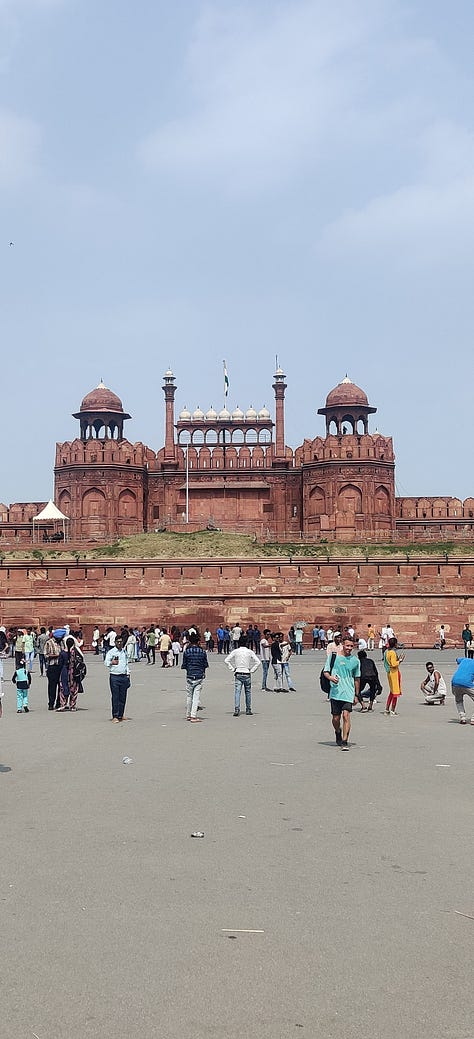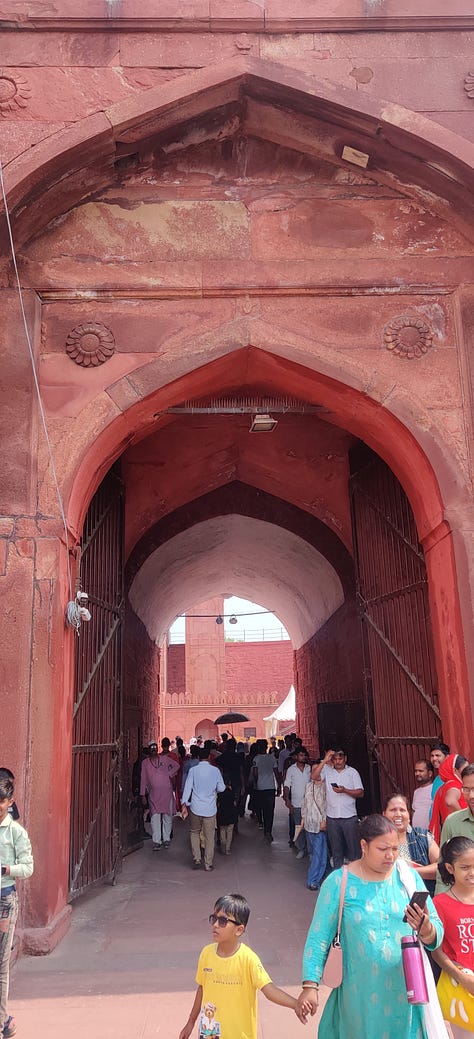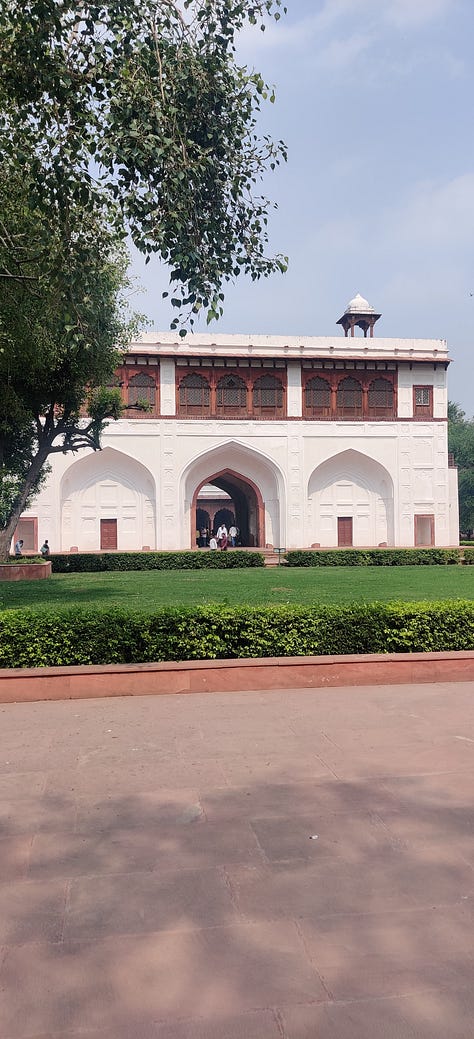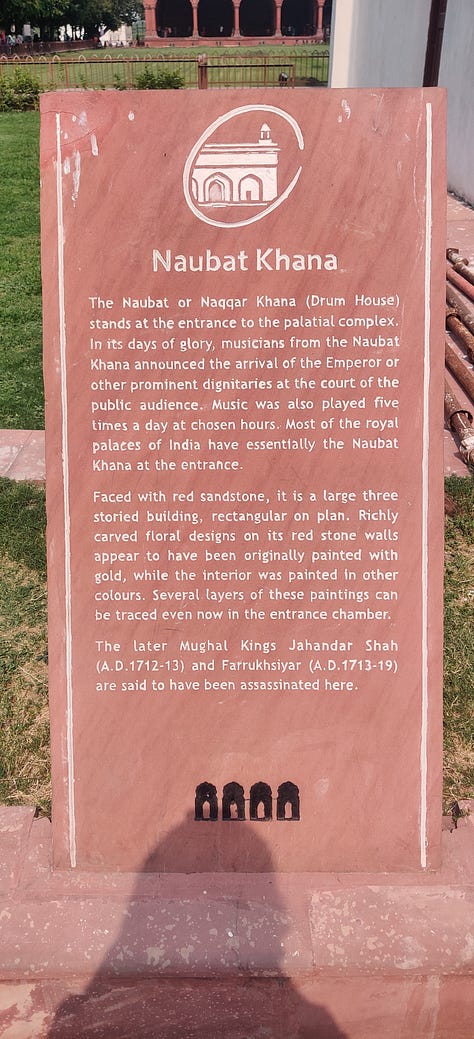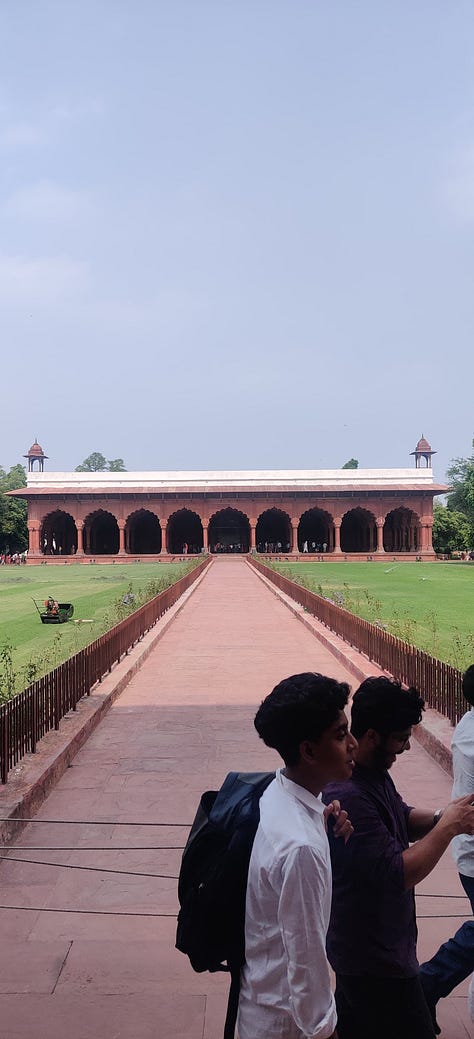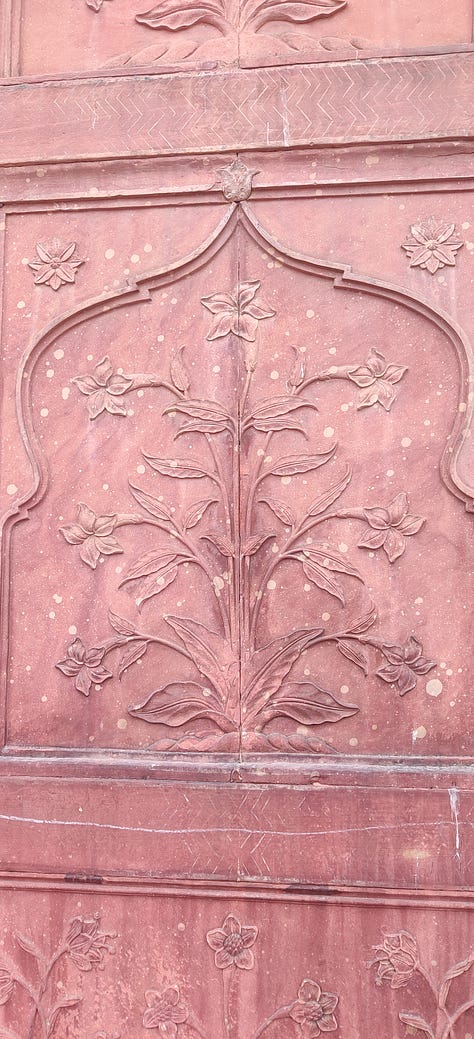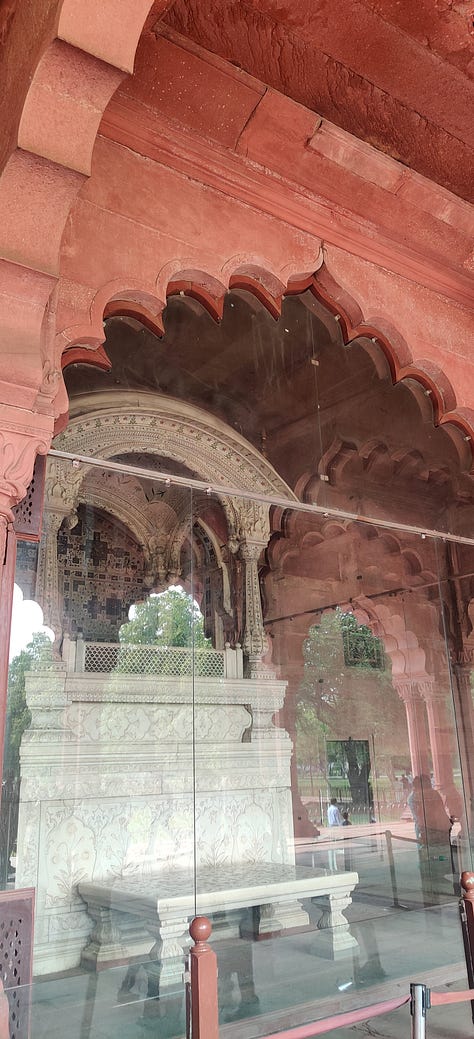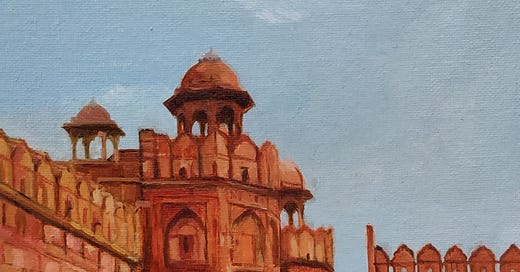“It rained since 6 am in the morning,” my house help said, informing me when I was out on my balcony, looking down at the tarmac which was wet from the sides, and I said, “not enough rain.”
When I left home, the sun was already high above and the streets were bright and bleached. The trees’ trunks were wet and the leaves - shimmering and shiny — rustling against the dry wind. By the time I reached the nearest metro station, my back was soaked in sweat, and I felt a sharp tingling as I entered a cold, air-conditioned Metro coach.
A quick Google search yields the information for the nearest metro station. I walked from Chandani Chowk metro Station to Lal Kila on foot, passing people selling mobile covers, belts, clothes, nimbu pani, and footwear. It’s not easy to walk in an area such densely populated. If you are not adept, you can easily be hit by a moving car, auto rickshaw or bullock cart.
As I crossed the market and after crossing the road where traffic doesn’t move an inch and everything comes to a standstill under the blazing sun, honking vehicles, in a long queue of sweating men, I entered the complex from a hard-to-locate opening of the series of yellow barricades on the pavement. My hopes were crushed as I see hundreds of people in the blinding daylight, clicking pictures and posing against the fort’s facade. I thought people might prefer to stay indoors and drink Rooh Afza as the mercury rises in the city.
I rushed towards the ticket counter, which is left to the entrance to purchase a ticket and one has to climb down the staircase, in a hysterical crowd to wrestle with the over-enthusiast multitude and buy one. I was informed by a man, hanging by the counter that, “the entrance is free.” Lucky me!!
After finding a way inside, soon I found myself standing in front of the tall red, gate, embellished with flowers, which lead to Chhata Chowk. The wide archway could swallow a camel or an elephant.
Standing still in the light and looking ahead, Chatta Chowk appeared as arched gate after gate. Small shops run across both sides, selling Jumkas, bangles, shawls, and souvenirs. There are alcoves above the shops where pigeons fluttered and rested on the iron grilles supporting the ancient structure.
Moving ahead, Naubat Khana, appeared somewhat a respite to the eyes from looking at the red sandstones, a white-blocked facade, lit up by the glaring sun, appearing brilliant white, with a foreground of a well-kept, green, manicured garden. It means Drum House. The musicians from Naubat Khana announced the arrival of the emperor or other prominent dignitaries at the court of the public audience. On the opposite wall of structures, I found beautiful embossed flowers in sandstone.
Standing at the back of Naubat Khana, one gets an uninterrupted view of Diwan - i – Am, the Hall-of-Public audience. I counted and it has nine arch openings and ten pillars. At this hour, the inside was well-lit. In the centre of this structure to the Eastern wall stands a marble canopy covered by 'Bengal Roof'. A marble dais below the throne was used by the wazir to receive petitions.
Behind Diwan-i-Am, crossing a non-functional fountain, one can see a structure not well kept, entirely in marble. One can see an open sky here, no high rise, no building, above it pigeons fly round and round. This is the emperor’s private palace which has three sets of rooms. In front of this structure, hibiscus bloomed defying Delhi’s sweltering heat.
The other notable structures in the compound are Sawan and Bhadon pavilions placed in front of each other, in the middle one can see Zafar Mahal, equidistant, constructed in the centre of a water tank.
I left the fort against the peacocks’ crying in stealth.
By the time I reached home, after meeting a friend at India Habitat Center, I felt itchy to return back to the painting I was working on the night before, which was inspired by the days spent under lockdown, in Delhi.
P.S.: This blog was written before the rains arrived in Delhi that drowned the parts of the city.
